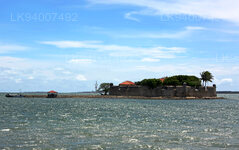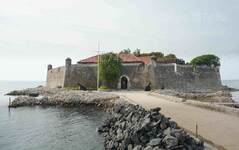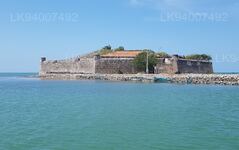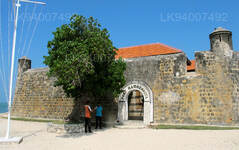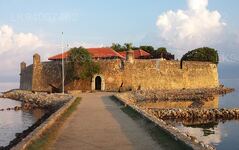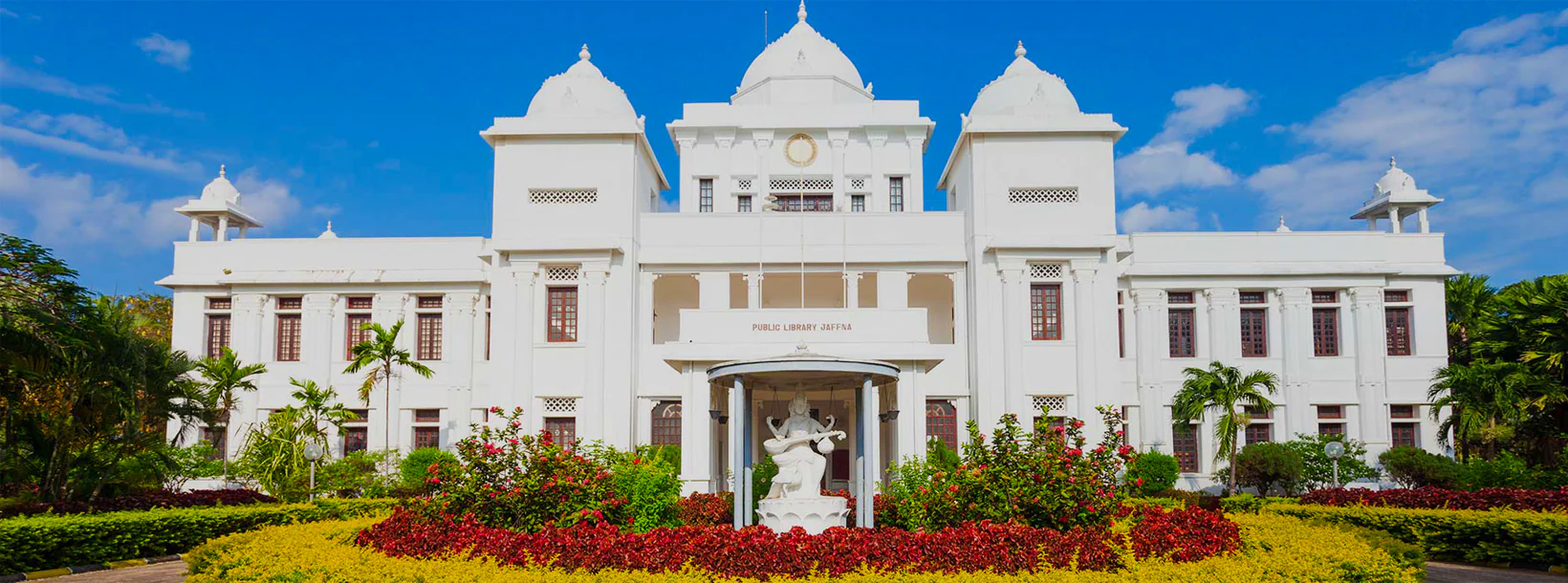
Jaffna City
Jaffna is the main city of Jaffna peninsula in the northernmost district of Sri Lanka. Comfortable intercity busses from Colombo take 10-12 hours to reach the city of Jaffna.
Hammenhiel-Festung
Fort Hammenhiel ist eine Festung, die um eine kleine Insel zwischen den Inseln Kayts und Karaitivu auf der Halbinsel Jaffna im Norden Sri Lankas errichtet wurde.
Geschichte
Die Portugiesen bauten Mitte des 17. Jahrhunderts die Festung aus abgebauten Korallen, um den Eingang zur Halbinsel Jaffna zu bewachen, und gaben ihr den Namen Fortaleza do Caes (Fort Royal). Die Holländer eroberten unter dem Kommando der Kapitäne Cornelies Reb, Piester Waset und N. van der Reede die Festung im März 1658 und benannten sie anschließend in Hammenhiel (Schinkenferse) um, da sie der Ansicht waren, dass die Form von Ceylon einem geräucherten Schinken ähnelte Die Festung befand sich an der Stelle, an der der Unterschenkelknochen hervorsteht. Die Niederländer bauten die Festung 1680 wieder auf, bauten einen steinernen Wellenbrecher, füllten die hohlen Stadtmauern auf, ersetzten das Obergeschoss durch ein Steingewölbe und errichteten nördlich der Festung einen mit Ziegeln ausgekleideten Stausee. Das Gefängnis verfügt über neun große Kerker zur Lagerung von Schießpulver. Die Niederländer unterhielten eine Garnison von etwa dreißig Soldaten unter der Leitung eines Leutnants oder Fähnrichs.
Die Briten nutzten das Fort zunächst als Hochsicherheitsgefängnis und dann als Krankenhaus für Infektionskrankheiten.
1971 wurde Rohana Wijeweera, Gründerführer der Janatha Vimukthi Peramuna, nach seiner Verhaftung in der Festung festgehalten. Später wurden darin andere Gefangene des gescheiterten JVP-Aufstands von 1971 untergebracht. Zu den Inhaftierten gehörten Upatissa Gamanayake, Lionel Bopage, Podi Athula (Victor Ivan), Loku Athula (N. Jayasinghe), Prof. Jayadeva Uyangoda und Mahinda Wijesekara (die später Ministerin werden sollte).
Spätere Verwendung
Da es viel Platz und einen geeigneten Ort zur Inhaftierung von Gefangenen bot, wurde es später von der srilankischen Marine zur Inhaftierung von Seeleuten genutzt, denen Fehlverhalten vorgeworfen wurde. Jetzt wurde es in ein Touristenhotel der srilankischen Marine umgewandelt.
About Jaffna District
Jaffna is the capital city of the Northern Province, Sri Lanka. 85% of the populations of the Jaffna and Kilinochchi districts are Hindus. The Hindus follow the Saivite tradition. The remainders are largely Roman Catholics or Protestants, some of whom are descendants of colonial settlers, known as Burghers. The Tamils are divided along caste lines, with the farmer-caste Vellalar forming the majority. Sea products, red onion, and tobacco are the main products in Jaffna.
Jaffna is home to beautiful Hindu temples. An Old Dutch Fort still stands well preserved within which is an old Church. Another example of Dutch architecture is the King's House. No visit to Jaffna is complete without tasting the exquisite Jaffna mango, reputed for its sweetness. About 3 km away is the majestic Nallur Kandaswamy Temple, home to the largest religious festival in Jaffna. The Kayts Harbour is an ancient ship docking site in the Jaffna region.
About Northern Province
The Northern Province is one of the 9 provinces of Sri Lanka. The provinces have existed since the 19th century but they didn't have any legal status until 1987 when the 13th Amendment to the 1978 Constitution of Sri Lanka established provincial councils. Between 1988 and 2006 the province was temporarily merged with the Eastern Province to form the North-East Province. The capital of the province is Jaffna.
Northern Province is located in the north of Sri Lanka and is just 22 miles (35 km) from India. The province is surrounded by the Gulf of Mannar and Palk Bay to the west, Palk Strait to the north, the Bay of Bengal to the east and the Eastern, North Central and North Western provinces to the south.The province has a number of lagoons, the largest being Jaffna Lagoon, Nanthi Kadal, Chundikkulam Lagoon, Vadamarachchi Lagoon, Uppu Aru Lagoon, Kokkilai lagoon, Nai Aru Lagoon and Chalai Lagoon.Most of the islands around Sri Lanka are to be found to the west of the Northern Province. The largest islands are: Kayts, Neduntivu, Karaitivu, Pungudutivu and Mandativu.
The Northern Province's population was 1,311,776 in 2007. The majority of the populations are Sri Lankan Tamils, with a minority Sri Lankan Moor and Sinhalese population. Sri Lankan Tamil is the major language spoken in the province by the vast majority of the population. The other language spoken is Sinhala by 1 percent of the population. English is widely spoken and understood in the cities.

